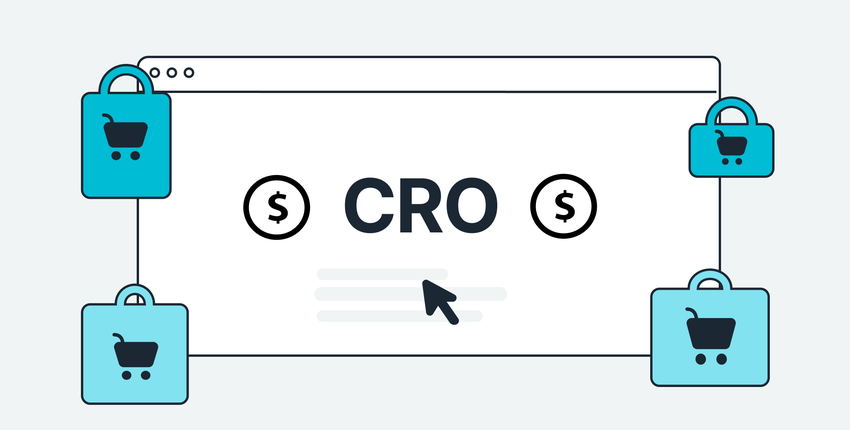Last updated Thu Dec 11 2025
20 Product Recommendation Examples [+Tips]
People love shopping and want every experience to be amazing.
In fact, they are 40% more likely to spend more than planned if they find their shopping experience to be personalized.
Relevant and personalized product recommendations are one of the main components of such experiences.
In this post, you'll see 20 product recommendation examples from successful ecommerce businesses. They'll help you understand ways to recommend products to your customers effectively and help shoppers make the right buying decisions faster.
Let's get started:
Maximize Shopify revenue with a single app
Recommend products with AI to help shoppers find what they’re looking for faster. Start your 14-day free trial and see the impact on your store in minutes.
What are product recommendations? (a beginner's guide)
Product recommendation software (best free and paid options)
How to create product recommendations with AI (steps and examples)
1. Recently viewed items
If a shopper visits a product page, it suggests a potential interest in purchasing, even if they are just researching. So, reminding them of the items they viewed can be an effective strategy to boost conversion rates.
OddBalls, one of the UK's leading underwear brands, displays recently viewed items in a dynamic way with the onsite feed. After the visitor checks out at least three products, it automatically creates a special notification:
If the visitor opens the notification, they will see the viewed products in a feed.
From there, they can check out the items once again...
The AI algorithm behind the example is a feature that uses multiple data sources (browsing activity, visitor profile or product sales performance) to predict purchase intention.
To achieve the highest change to get a conversion, it shows the most relevant items among all the last viewed products.
And it works on autopilot—just add to your Shopify store and monitor sales thanks to built-in revenue tracking.
Or, if you prefer to learn by doing, try this channel on your store:
Not ready yet? Learn more about using Wisepops for ecommerce or read OddBalls case study

"The notification feed at OddBalls has been instrumental in helping us to gather data, assist conversion rates, promoting new launches and ultimately generating revenue since we launched it. It's a fantastic feature that has been in use for over a year... We highly recommend the use of the feed for all stores."
2. "Customer favorites"
Highlighting customer favorites is an excellent strategy to leverage the power of social proof and increase sales. If you have a product that sells better than others, you can recommend it to your customers.
Since one popular item may not be the right contextual fit for every customer, one idea is to promote that product on the homepage. In this product recommendation example, Black Ember promotes a popular item along with a customer review:
Again, Black Ember uses onsite notifications to engage visitors.
Since non-intrusiveness is important for the brand, they prefer to use this onsite marketing channel to promote products.

“Our first priority is to provide our community with a positive, engaging, and easy-to-use UX. We have found [onsite notifications] to perfectly complement the design and functionality of our website.”
This strategy of promoting and recommending products works well—
Black Ember was able to drive over 4,000 visitors from the homepage to the product pages with only a couple of onsite notifications.
Here's one of those campaigns:
Learn more: Read Black Ember case study
3. "Complete your look"
This one is a more contextual product recommendation example. When a customer adds an item to the shopping cart, a popup with suggestions appears, offering them the opportunity to explore products related to the one they’ve added, enhancing their shopping experience.
Here's how Soi Paris does it:

Find out how this French brand had 233 discount codes redeemed in 48 hours thanks to a creative onsite campaign:
4. "You might also like"
Just like the previous ecommerce product recommendation example, this one from Faguo is about suggesting other items when a shopper adds something to the cart.
The three recommended products appear in the bottom part of the popup, along with prices:

Learn how this clothing store generates 11x more leads while lowering costs by 4x:
You can also implement "you might also like" product suggestions as web page sections, of course.
Here, WP Standard suggests products on the bottom of a product page:
WP Standard is a remarkable success story that began with a few-hundred-dollar budget.
5. Bestsellers
In this product suggestion example, A.P.C offers best-selling items. This is a good way to promote them because of the non-intrusive onsite feed:
Customers can re-visit products or add them to the cart with a single click:
Would you like to share upsell offers in popups?
This guide to upsell popups will help you get started.
6. Recommended accessories
Besides related similar items, you can also recommend accessories to the products your customers added to the cart. This is exactly what this product suggestion example is about—this upsell popup below offers two accessories (straps and handles) to the main product (a backpack).
And there's a discount to sweeten the deal, too—if customers decide to buy the accessories, they get a special bundle price:
A guide to converting visitors with discounts in popups:
7. Recommendations based on product property
This product suggestion idea is brilliant, boosting visitor engagement by guiding them in a helpful and contextual way.
Brooklinen added options to choose different product variations right above the "add to cart" button, which makes exploration super easy. By breaking down the main property of the product, they allow customers to pick faster and easier, without even having to scroll further:
Get practical tips on how to increase engagement with products launches:
8. New collection
Contextual ecommerce popups are a great way to recommend and drive traffic to product pages. Le Creuset used a popup to attract more visitors to its newly unveiled collection, now available in an entirely new color (sea salt).
The campaign was shown only to visitors browsing product pages (which suggested higher product exploration interest) and recommended to go check out the new collection:
Did you know there are 30+ popup types businesses use to increase conversions?
See which ones could work for you: All types of popups, explained.
9. Recommendations based on quiz answers
Product quizzes are an awesome way to recommend products based on the real needs of customers. If you're selling products that can potentially be recommended this way (say, coffee blends, skincare products, etc.), consider implementing a quiz.
Example:
Blume helps its customers choose the right products for their skincare routine. Here's the last quiz window with product suggestions (note the discount, too!):

Blume consistently converts 5% of visitors with popups: read case study
To increase the number of quiz takers, businesses often use exit intent popups. They appear only on exit (to comply with Google's rules), and help find the quiz in one click.
Example:
Stumptown Coffee Roasters, another store that recommends products with a quiz, drives visitors there with this campaign:
Get started with exit-intent popups:
10. Products in context
This product recommendation example can work especially well for retailers. It solves one big problem: helping customers see how different products fit together.
Say, if you wanted to redo your kitchen, you would have to buy a bunch of items (lamps, tables, chairs, glasses, etc.), you'd need to make sure they fit together nicely, right?
Ikea solves this problem by suggesting products in context like this:
11. "Goes great with"
Another good idea if you're looking for tactics to recommend product bundles. WP Standard, one of the top Shopify stores, offers two related items (a wallet and a laptop sleeve) that might go nicely with the cargo tote bag we're viewing:
Engage more of your customers with wishlists:
12. Restocked trending products
Should a popular product be restocked following a sell-out, it's important to share an announcement to sustain its success.
This is exactly what Dolce & Gabbana does with this small popup campaign—the visitors can go right to that trending t-shirt from Kim Kardashian:
Want to see creative examples of how businesses engage customers with popups?
Take a look at these 50+ website popup examples (including Ben & Jerry's, Brooklinen, and TOMS).
13. Personalized bundle recommendations
This product recommendation example is a great way to increase the average order value. If a customer expresses interest in a product, consider proposing a bundled purchase at a special price.
Like below, I can get a product I viewed + a related one with a mystery discount:
Need ideas for discounts and special deals?
Check out these 20 discount and coupon code ideas
14. Similar products
One way in which Intelligensia helps its visitors choose coffee blends is by taste profile. This section, showcasing product recommendations, offers items characterized by a "Caramel & Stone fruit" taste profile, situated on a product page that shares this similar flavor profile:
15. "People also bought"
Another popular product recommendation idea, "people also bought" uses the power of social proof to increase the average order value.
Gymshark shows these product suggestions after customers add something to the shopping cart:
16. Expert recommendations
Another idea to help customers choose products is to have an expert provide recommendations.
Dusk, for example, showcases "Pairings from our designers" suggestions on product pages to help customers select complementary furniture and homeware items:
17. Recommendations based on product use cases
Sometimes, recommending products based on specific use cases is more helpful for customers than suggesting specific items. This way, they can go right to the products they actually need instead of browsing dozens of pages.
Bombas uses this product recommendation tactic—as you can see, we can easily choose socks for specific occasions:
18. Product suggestions on checkout
Offering product suggestions at the checkout page can be a smart move to potentially improve ecommerce sales. The key here is to recommend products relevant to those already in the shopping cart to ensure relevance.
For example, Taylor Stitch recommends a crew sweater to complete the outfit (so far, there's only jeans in the cart):
19. New arrivals
Inform your customers about the latest products and attract new ones interested in the latest trends with "new arrivals" suggestions. This approach not only helps to maintain a dynamic online store but also encourages repeated visits from customers eager to check out new items.
Here's an example of such a product recommendation section from 911 Supply:
20. Customers also viewed
Another product recommendation tactic that takes advantage of social proof. By showing "customers also viewed" suggestions on product pages, you entice visitors to explore additional items that have caught the attention of others.
For example, Pura Vida Bracelets showed me this section as I was browsing rings:
Summary
Using product recommendation tactics is a good way to enhance the customer experience, drive sales, and increase the average order value. From product quizzes to "people also bought" sections, each approach offers a unique method to connect customers with the right products.
If you'd like to know more about how to grow sales in ecommerce, check out these guides from our blog:

Oleksii Kovalenko
Oleksii Kovalenko is a digital marketing expert and a writer with a degree in international marketing. He has seven years of experience helping ecommerce store owners promote their businesses by writing detailed, in-depth guides.
Education:
Master's in International Marketing, Academy of Municipal Administration
Related articles

5/20/2025
Learn how to build customer loyalty with these strategies and examples from online businesses.

6/13/2025
Learn how to get started with conversion rate optimization (CRO) and turn more website visitors into customers. Includes best practices and expert tips.

